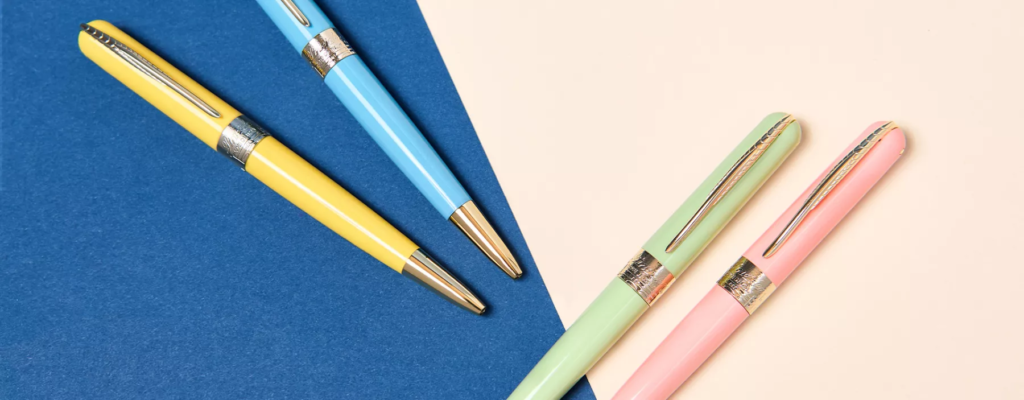You probably have one in a drawer, another buried at the bottom of a bag, and a third borrowed from a hotel desk. It’s the ballpoint pen—ubiquitous, humble, and often overlooked. We use it to sign mortgages, doodle during phone calls, and hastily jot down grocery lists. But have you ever stopped to consider the marvel of engineering in your hand? The ballpoint pen is a story of innovation, design, and even a touch of obsession.
This isn’t just a tool; it’s a silent partner in our daily lives, and its journey from a flawed concept to a global icon is surprisingly fascinating.
The “Aha!” Moment That Changed Writing Forever
Before the ballpoint, writing was a messy affair. Fountain pens, while elegant, were prone to leaks, smudges, and required constant refilling. The quest for a cleaner, more reliable pen was on.
The true genius behind the ballpoint was László Bíró, a Hungarian-Argentinian journalist. Frustrated by the smudging of fountain pens, he noticed that the quick-drying ink used in newspaper printing left clean, smudge-free lines. The challenge was getting that thick, viscous ink to flow onto paper.
Bíró’s eureka moment, inspired by watching a ball roll through a puddle and leave a trail of water, was to use a tiny, precisely rotating ball bearing in the pen’s tip. As the ball rolled across paper, it picked up ink from the cartridge and deposited it smoothly onto the page. Paired with his brother György, a chemist, they developed a new viscous ink that wouldn’t dry inside the pen but would dry almost instantly on paper. Patented in 1938, the Bíró Pen was born.
The Physics in Your Pocket: How It Actually Works
The magic is in the tip. That small metal ball (usually made from tungsten carbide for durability) is held perfectly in a socket, with just enough room to rotate freely.
The Reservoir: The ink is stored in a long, narrow tube. Its thick, oil-based consistency prevents it from leaking or drying out.
The Delivery: As you drag the pen across paper, the ball rotates.
The Transfer: This rotation draws ink from the cartridge onto the ball.
The Application: The rotating ball then transfers that ink directly onto the paper in a continuous, controlled line.

It’s a perfect, self-regulating system of capillary action and gravity. No pumps, no leaks, just smooth, consistent writing.
From Utility to Object of Desire: The World of Luxury Pens
While a basic Bic Cristal might cost 30 cents, the world of ballpoints extends far into the realm of luxury. For many, a pen is no longer just a writing instrument; it’s a status symbol, a piece of art, and a collectible.
Brands like Montblanc, Parker, and Cross transformed the pen into an executive accessory. Crafted from precious resins, inlaid with gold and platinum, and engineered with exquisite precision, these pens are heirlooms. They represent a commitment to craftsmanship in a digital age. The satisfying click of a retractable mechanism or the smooth twist of a cap becomes a tactile experience that a touchscreen can never replicate.
The Great Debate: Gel vs. Ballpoint
The ballpoint’s reign was challenged by the rise of the gel pen, particularly from Japanese brands like Pilot (G2) and Uni-ball (Signo). Gel ink is water-based and uses pigments, allowing for a wider range of vibrant, opaque colors and a much smoother, almost effortless glide.
So, which is better? It depends:
Ballpoint: The workhorse. Reliable, long-lasting, writes on most surfaces, and is less prone to smudging. The ink is also typically water-resistant.
Gel: The artist. Offers unparalleled smoothness, bold color payoff, and requires less pressure to write. Perfect for those who value a silky writing feel.
Ultimately, the “best” pen is a matter of personal preference, a tiny but daily declaration of what you value most in your tools.
Why We Still Care in a Digital World
In an era of keyboards and touchscreens, the enduring appeal of the ballpoint pen is a testament to its irreplaceable utility.
Tangibility: The physical act of writing aids memory and creativity in a way typing does not. The connection between thought, hand, and paper is direct and personal.
Unmatched Reliability: It doesn’t need charging, a Wi-Fi password, or software updates. It just works.
An Expression of Self: Your choice of pen—from a quirky promotional freebie to a sleek metal bodied instrument—says something about you. It’s a tiny extension of your personality.
The next time you pick up a ballpoint pen, take a second to appreciate it. Roll the tip between your fingers and consider the brilliant simplicity of that rotating ball. It’s a testament to human ingenuity—a tool that democratized writing, became a cultural icon, and continues to leave its mark on the world, one clean, smudge-free line at a time.

